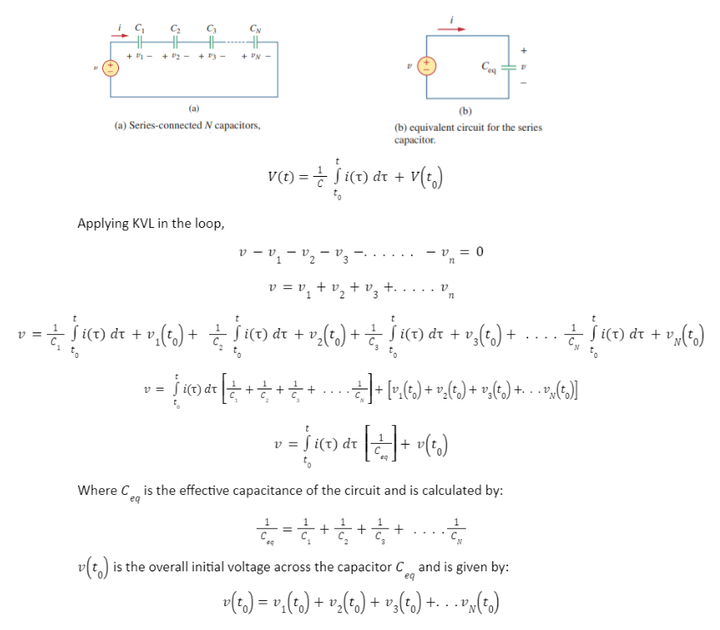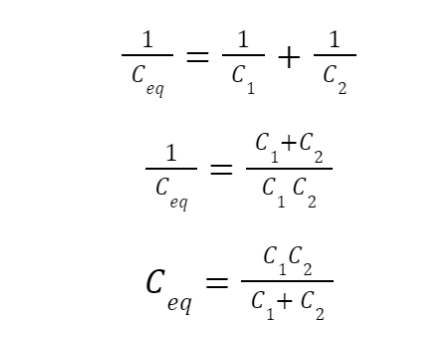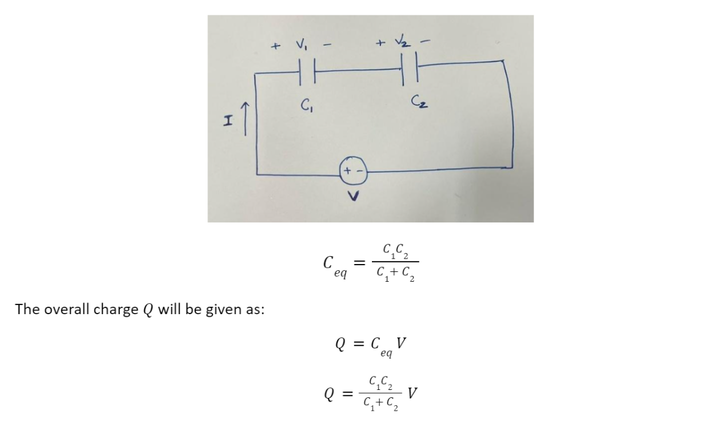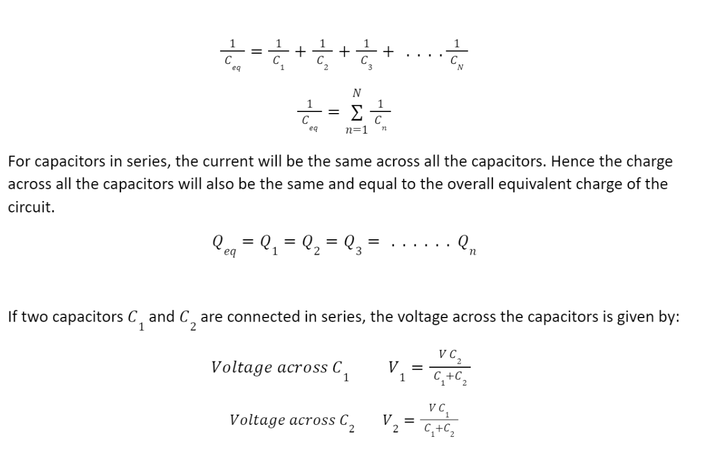Capacitors in Series
By BYJU'S Exam Prep
Updated on: September 25th, 2023

Capacitors in series are done to improve the stability of the system. In an electric circuit, a capacitor is a passive component designed to store energy in its electric field. A capacitor can be modeled as electrical capacitance in an electric circuit. Tuning circuits, Dynamic memory elements, etc. are some of the applications of capacitors and connections of capacitors in series.
A capacitor can be formed by separating two conductors, and between the separation, insulators or dielectrics can be filled. The equivalent capacitance depends on individual capacitance as well as the way they have connected, either capacitor in series or capacitors in parallel. The article elaborates on the equivalent capacitance of capacitors in series, formula, etc.
Download Formulas for GATE Electronics & Communication Engineering – Control System
Table of content
Capacitors in Series
A capacitor is a two-terminal passive component that can store energy electrostatically in an electric field. There exist different types of capacitors, but all contain two electrical conductors separated by a dielectric between the conductors. The purpose of the dielectric is to increase the storage charge capacity of the capacitor.
Multiple connections of capacitors in series can be modeled as a single equivalent capacitor in series. The total equivalent capacitance of the capacitors in series is always less than the smallest capacitor present in the circuit.
Download Formulas for GATE Electronics & Communication Engineering – Digital Circuits
Equivalent Capacitance of Capacitors in Series
Consider a series connection of N capacitors having equivalent circuits, also as shown below. The same current is flowing through all the capacitors as they are in series.
If a current I is flowing through a capacitor having capacitance C, the voltage V across the capacitor at any interval of time is equal to,

Capacitors in series are similar to that of resistors in parallel. The equivalent capacitance of capacitors in series is always less than the value of the smallest capacitance present in the circuit. For two capacitors, C1 and C2 connected in series, the equivalent capacitance will be:
Download Formulas for GATE Electronics & Communication Engineering – Electronic Devices
Voltage and Current Across Capacitors in Series
For simplification, assume two capacitors C1 and C2 connected in series and voltage across capacitor are V1 and V2, respectively, as shown below:
Since the capacitors are in series, the current through both the capacitors will be the same. The total equivalent capacitance will be,

Since the capacitor is in series, the charge will not get distributed between capacitors. If Q1 and Q2 are the charges across capacitors C1 and C2, respectively, then

Capacitors in Series Formula
When N number of capacitors are connected in series, then the overall equivalent capacitance is calculated by the given Capacitors in series formula:



